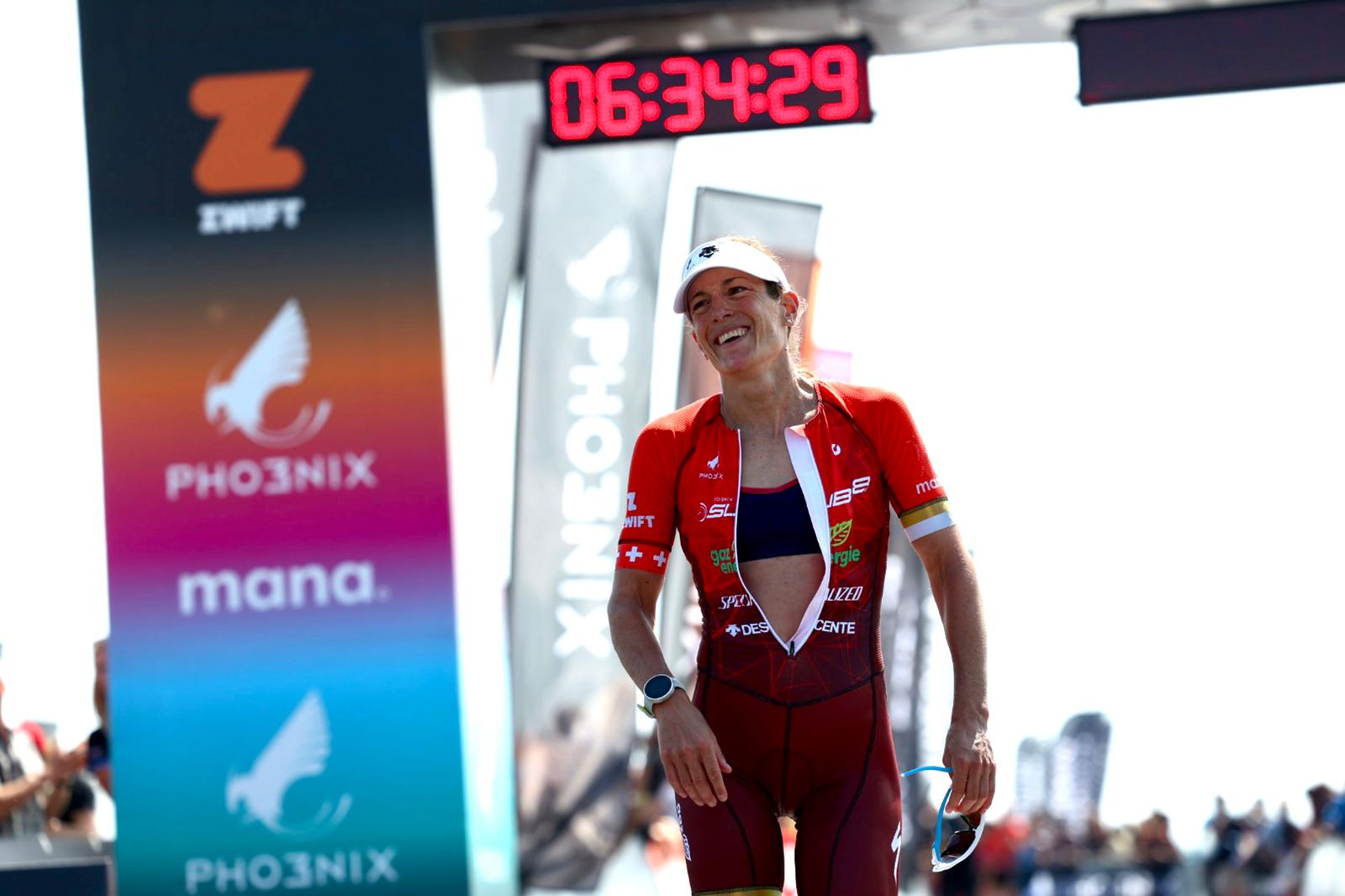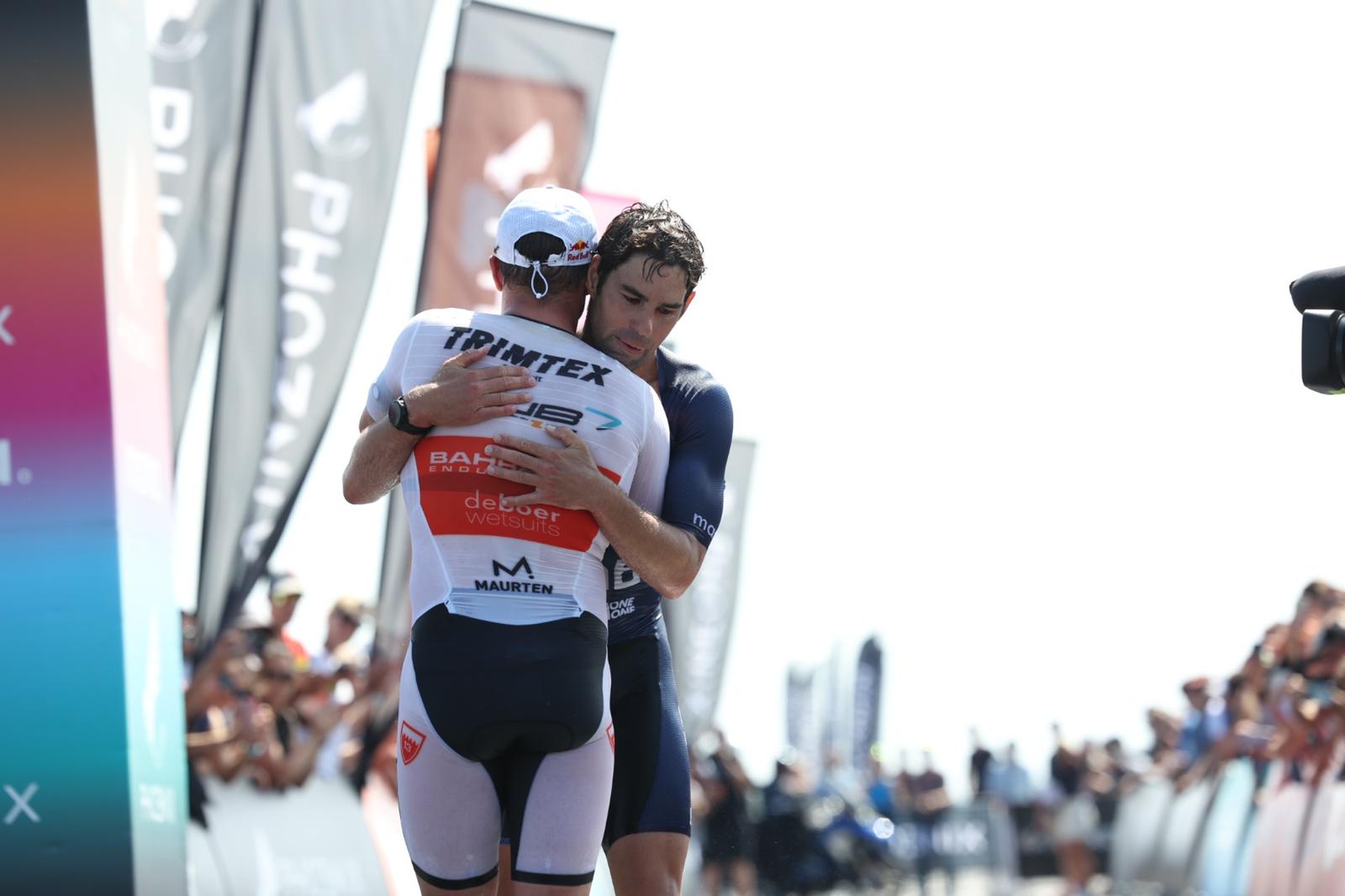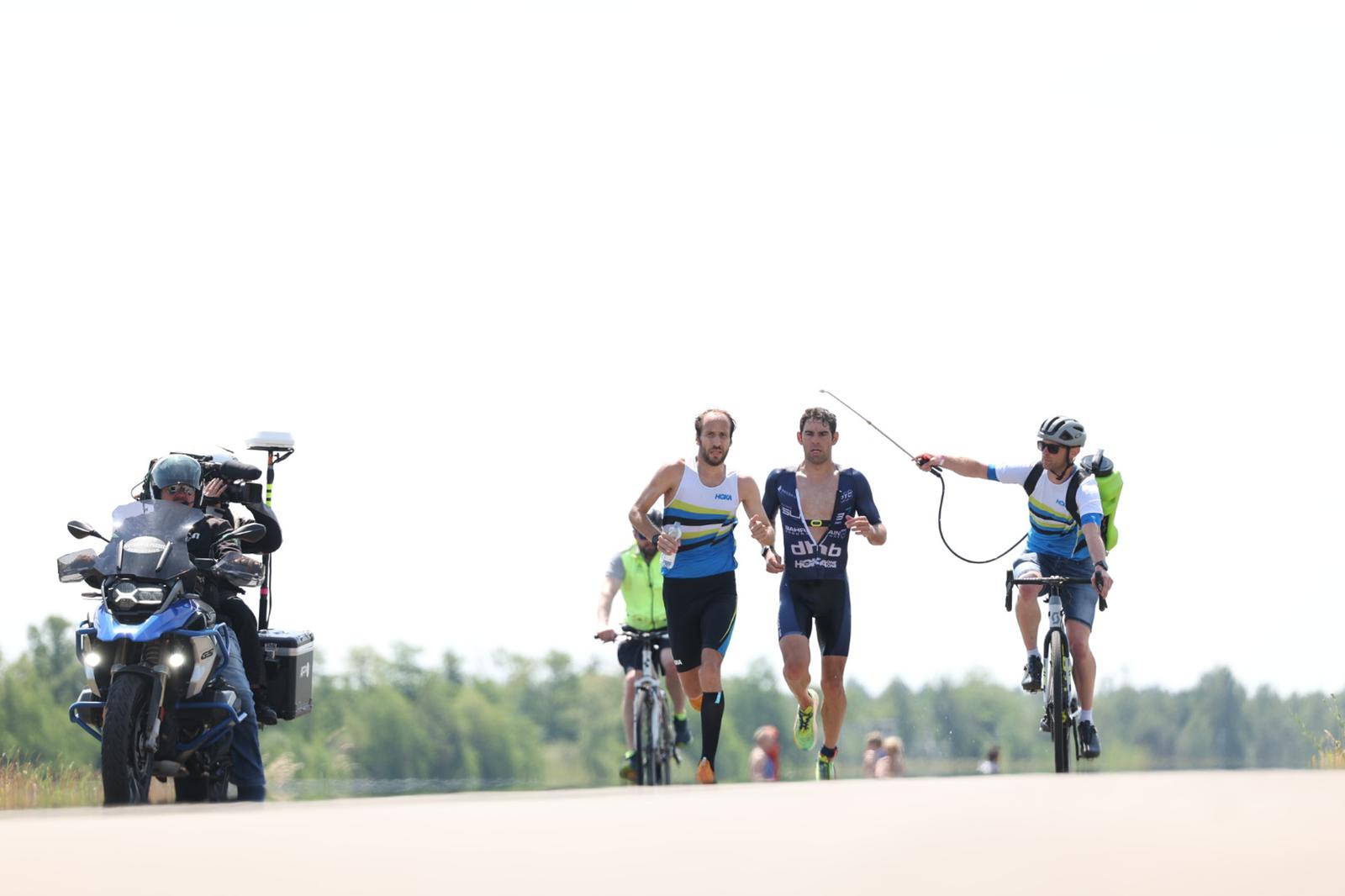Sub7/Sub 8: What we learnt from the fastest triathlon on earth
The Sub7/Sub8 challenge was a spectacle of human endurance, speed and strength. Here Tim Heming looks at the key highlights from the fastest multisport race the world has ever seen

The Pho3nix Foundation Sub-7 Sub-8 Project was an ambitious experiment to see whether the best male and female triathletes could “defy the impossible” and break seven and eight hours, respectively, for the iron-distance in triathlon.
Consisting of a 2.4-mile point-to-point lake swim, a 112-mile bike leg and 26.2-mile run on the Dekra Lausitzring motor racing circuit near Dresden, Britain’s Kat Matthews and Joe Skipper, Switzerland’s Nicola Spirig and Norway’s Kristian Blummenfelt all took up the challenge.
With Matthews winning the women’s race in 7:31:54 and Blummenfelt the men’s in 6:44:25, all four athletes finished well under their target marks, but the splits only tell part of the story. Here’s what else we learnt from the fastest triathlons the world has ever seen.
We sure have some fast triathletes
Let’s park the draft-legal aspect for a moment. When you have Joe Skipper running a 2:36:43 marathon and Kristian Blummenfelt runs six minutes into him, you know there’s some talent on show.
When Matthews runs 2:46:09 and Spirig 2:45:07, having also completed a 2.4-mile swim and 112-mile ride, these are athletic achievements to be celebrated and inspire.
Drafting

Yes, the draft effect on the bike was big. It’s how team time-trials work – and we always knew that would be the case.
For those whose issue is the polluting of the solo test of triathlon, perhaps don’t view it as a triathlon in the traditional sense. More a hybrid of triathlon and cycling, one both sets of fans can embrace.
There are swimmers… and there are swimmers
The discipline that triathletes struggle with more than any other, and the one where the gap to world-class single-sport athletes is the biggest. No more illustrated than with Spirig’s swim team where Lucy Buckingham and Angela Maurer led the way as pacers.
Maurer is a two-time 25km open water world champion. She’s also 46 and looked like she was swimming a cool-down. When swimmers are that good it’s inspiring to watch, and a little bit heart-breaking too.
If it was Spirig’s final bow – it wasn’t a bad way to go out

London 2012 champion Spirig is the most successful female Olympic triathlete, a veteran of five Games and a mother of three.
Now 40, she has announced that this season will be her last, and if her Sub-8 challenge is the swansong then it was the type of gutsy performance – coming back from a bike crash in February – that has typified her career.
Team time-trialling is an artform
While there are triathletes who love the bike, there are others who just see it as a necessary evil to link the swim and run.
In Sub7/Sub8, the bike section was borrowed wholesale from the world of team cycling – both track and road – as tactics over how much power could be sustained, how many pacers should be on track at any given time, and how long the turns at the front should be, came into their own.
If this is a format that is to be repeated there’s a whole host of fun to delve into, and plenty of skills to practise at home.
You’ll never please everyone
This project had its detractors from the outset, and whatever the bike splits had been there would have been an angle to criticise.
To some, the fact they were so fast – Skipper’s team largely consisting of track and road time-triallists from Ribble-Weldtite put in a 3:16:42 bike split – will only serve as evidence that holding ninth wheel in a paceline requires very little effort.
Releasing the power data would certainly help to provide clearer context, but Skipper, Blummenfelt, Spirig and Matthews all still had to hold that wheel and their concentration for hours on end. And while they might have flashed by in a blur, they definitely looked like they were pedalling.
Sub 8 was easier than Sub 7
Or to clarify, Sub 8 for women was easier than Sub 7 for men. This was generally predicted given there is rarely an hour between the sexes when analysing the comparative times of the best Ironman performers.
It meant Matthews, who started an hour before, took the tape first. You can argue among yourselves whether her 7:31 performance was better than Blummenfelt’s 6:44, but I’d suggest they were pretty much on par.
But world record talk is futile
No, these were not new Ironman, iron-distance or long-course world records, but aside from a bit of obfuscation for simplification in the mainstream media, no-one ever claimed they were.
There was an evident advantage in this one due to the draft-legal bike leg, but there have been more subtle advantages on other ‘record-setting’ races such as short courses and down-current swims.
If you want to put huge store in finish times, that’s your lookout, but there are probably better ways to expend energy.
The team spirit was evident all week
Kat Matthews’ team mantra was “happy heads make for fast legs” but it’s worth more than fluffy psychobabble. When you’re riding at breakneck speed centimetres away from the wheel in front, it helps if you trust and have confidence in each other.
You could see from the camaraderie and cuddles how much this meant to all four groups. As Matthews said in her post-race comment: “Honestly, of all the triathlons of the whole world, this is about the team.”
View this post on Instagram
A post shared by Kat Matthews (@katr_matthews)
<![CDATA[//><!]]>
Blummenfelt is No. 1 in the world – but won’t have it all his own way

What Kristian Blummenfelt has achieved in under a year is unprecedented in triathlon – and he hasn’t finished yet. With Kona, the PTO races, Ironman 70.3 Worlds and a home ITU World Cup race in Bergen to come, there’s a wealth of opportunity for him in 2022.
The Norwegian is undoubtedly the top dog right now, but memories are short in this sport. Facing Alex Yee coming out of T2 in a short-course race, training partner Gustav Iden at 70.3, or Jan Frodeno this October in Kona, could be among among the stern tests that await. He’s still got plenty to prove.
Skipper earned respect

If Kat Matthews had just a couple of months to prepare, Joe Skipper had just a few days. The list of other triathletes who could have stepped up and been so competitive for so long would be extremely short.
Even despite a poor swim, he got his head down, and stuck to the task undaunted by having to hold the back of paceline travelling at 55kmph.
“If we didn’t hear anything he was fine!” explained time-triallist Alex Dowsett when asked how they knew if he was handling the pace of the bike leg. That he made it a contest by maintaining the lead through so much of the marathon showed just how deep he was prepared to push.
Finally, marginal gains don’t have to all be hi-tech

If you want to cool your triathlete’s body temperature on the run, just go online, hire a weed-sprayer and fill it with iced water! Some of the best ideas are the simplest.
Top image credit: Mana Group/Pho3nix Foundation




